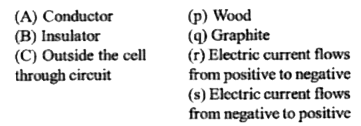When a layer of air receives enough heat from Earth's surface, it expands and becomes less dense. This layer is then pushed upward by buoyancy. The cool and heavy air sinks under this layer. This cycle repeats with the re-heating of the cool air. The phenomenon described in the preamble is known as
Radiation
Induction
Conduction
Convection
Step-by-Step Text Solution:
1. Understanding the Process: The question describes a phenomenon where a layer of air receives heat from the Earth's surface, causing it to expand and become less dense. This is the initial stage of the process.
2. Buoyancy Effect: Once the air expands and becomes less dense, it is pushed upward due to buoyancy. Buoyancy is the force that causes less dense substances to rise in a denser medium.
3. Sinking of Cool Air: As the warm air rises, the cooler and denser air that was above it sinks down to take its place. This creates a cycle of movement.
4. Reheating of Cool Air: The cool air that sinks is eventually heated again by the Earth's surface, causing it to expand, become less dense, and rise once more.
5. Continuous Cycle: This process of warm air rising and cool air sinking continues, creating a cycle of air movement.
6. Identifying the Phenomenon: The entire process described is known as "Convection." Convection is the transfer of heat through the movement of fluids (which can be liquids or gases) caused by differences in temperature and density.
Final Answer: The phenomenon described in the preamble is known as Convection.
---
Topper's Solved these Questions
- HEATBOOK - BEIITIANSCHAPTER - HEATEXERCISE - Conceptive Worksheet
15 Videos
- HEATBOOK - BEIITIANSCHAPTER - HEATEXERCISE - Summative Worksheet
14 Videos
- ELECTRIC CURRENT AND ITS EFFECTSBOOK - BEIITIANSCHAPTER - ELECTRIC CURRENT AND ITS EFFECTSEXERCISE - IIT JEE WORKSHEET (V. Matrix Matching)
3 Videos
- MEASUREMENTBOOK - BEIITIANSCHAPTER - MEASUREMENTEXERCISE - IIT JEE WORKSHEET (IV INTEGER TYPE)
1 Videos
Similar Questions
What is the temperature range of a clinical thermometer?
View SolutionRamesh fills a black and a white-coloured containr with an equal amount of water and leaves them in mid-day sun for about an hour. When he checks the temperature of water in both the containers using a thermometer, he finds that the water in the black-coloured container is hotter. Which of the following statements cannot be concluded from the given activity?
View Solution
View SolutionThe length of a blackboard is 240 cm. Rakesh tries to measure this length using a small wooden stick of length 40 cm. The number of times that the stick must be revolved over the blackboard to completely cover the length is
View SolutionThe another name for air layering is
View SolutionDistinguish mound layering and air layering.
View SolutionWhy heat paraffin and pour paraffin as a layer on the heated and cooled glucose?
View SolutionDistinguish between mound layering and air layering.
View SolutionDistinguish mound layering and air layering.
View SolutionThe atmospheric layer farthest from the Earth's surface is known as
View SolutionThe layer of air around the earth is known as
View SolutionIn moist air copper corrodes to produce a green layer on the surface. What is that layer ?
View SolutionCa on exposure in moist air forms a layer on surface of:
View SolutionIn moist air copper corrodes to produce a green layer on the surface. What is that layer ?
View Solutionहवा गर्म होने पर फैलती है। इसे दिखाने के लिए एक प्रयोग का वर्णन करें।
View Solution
